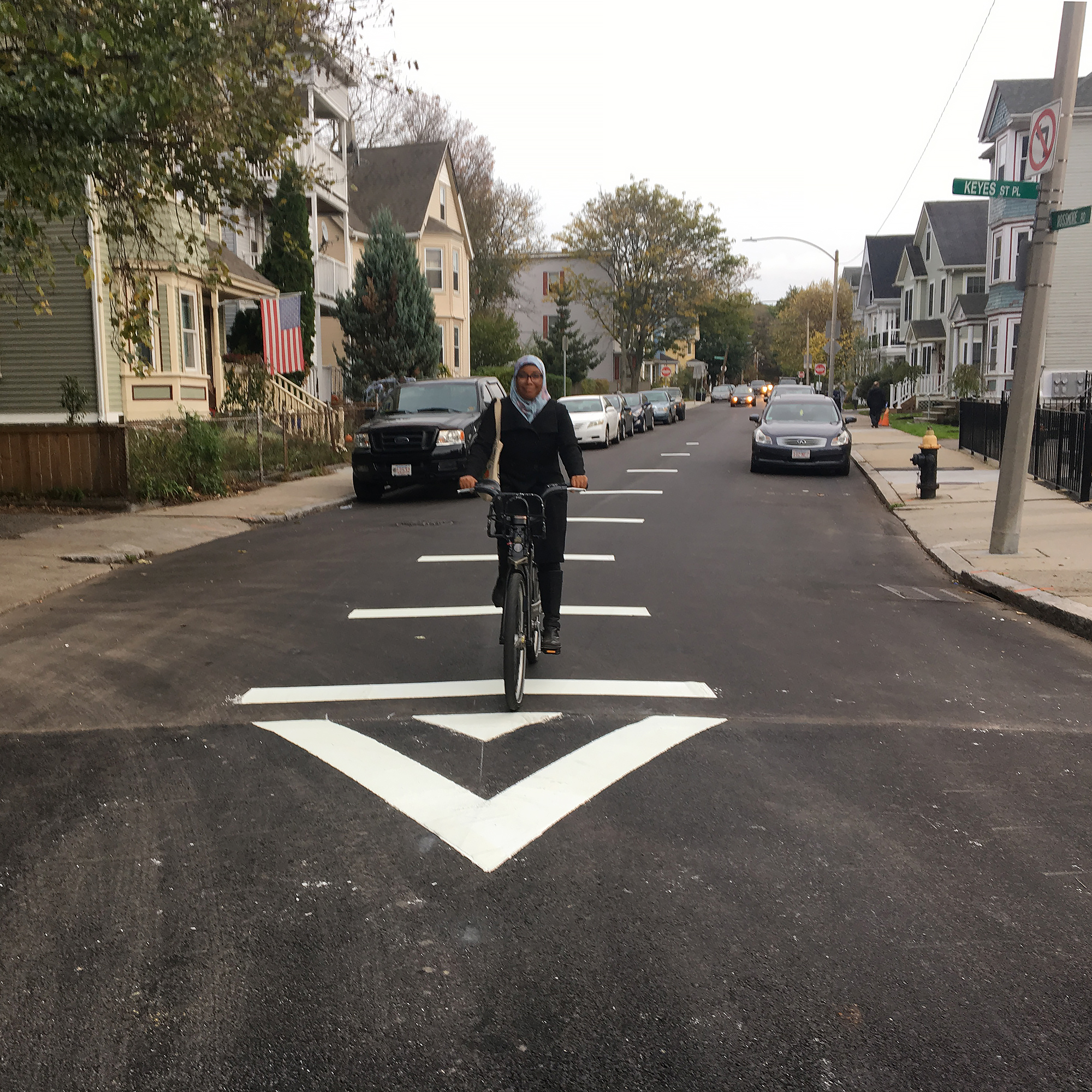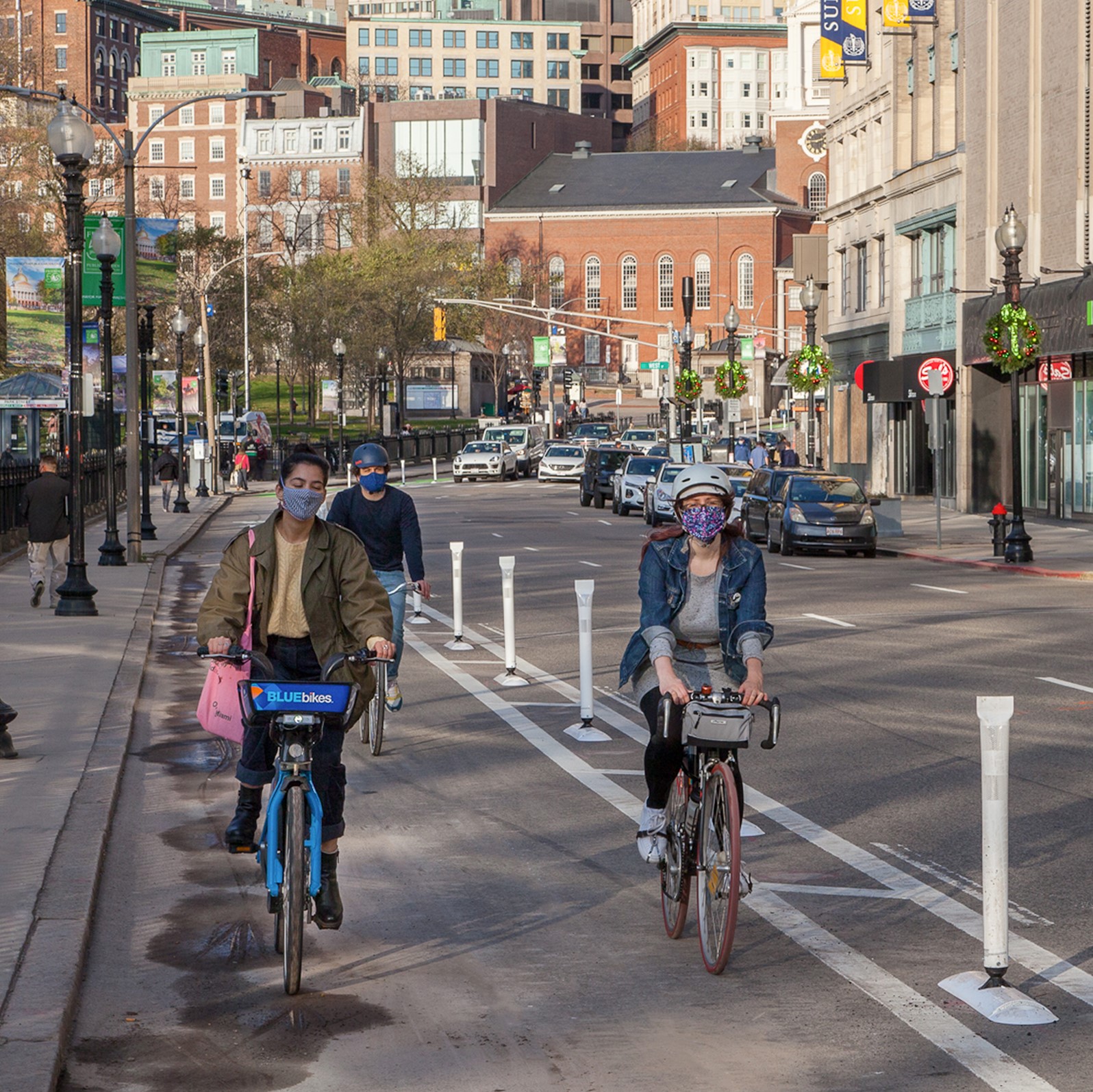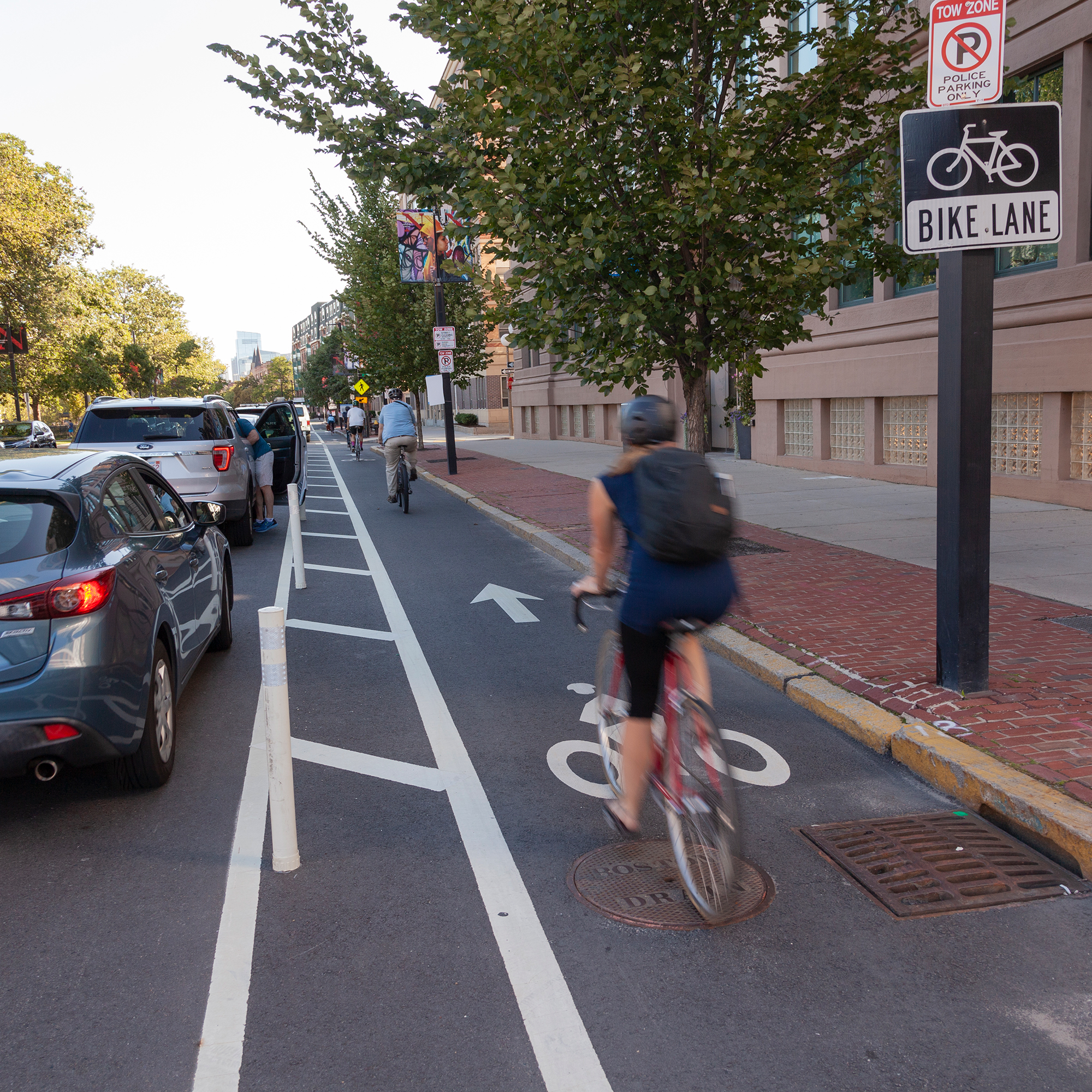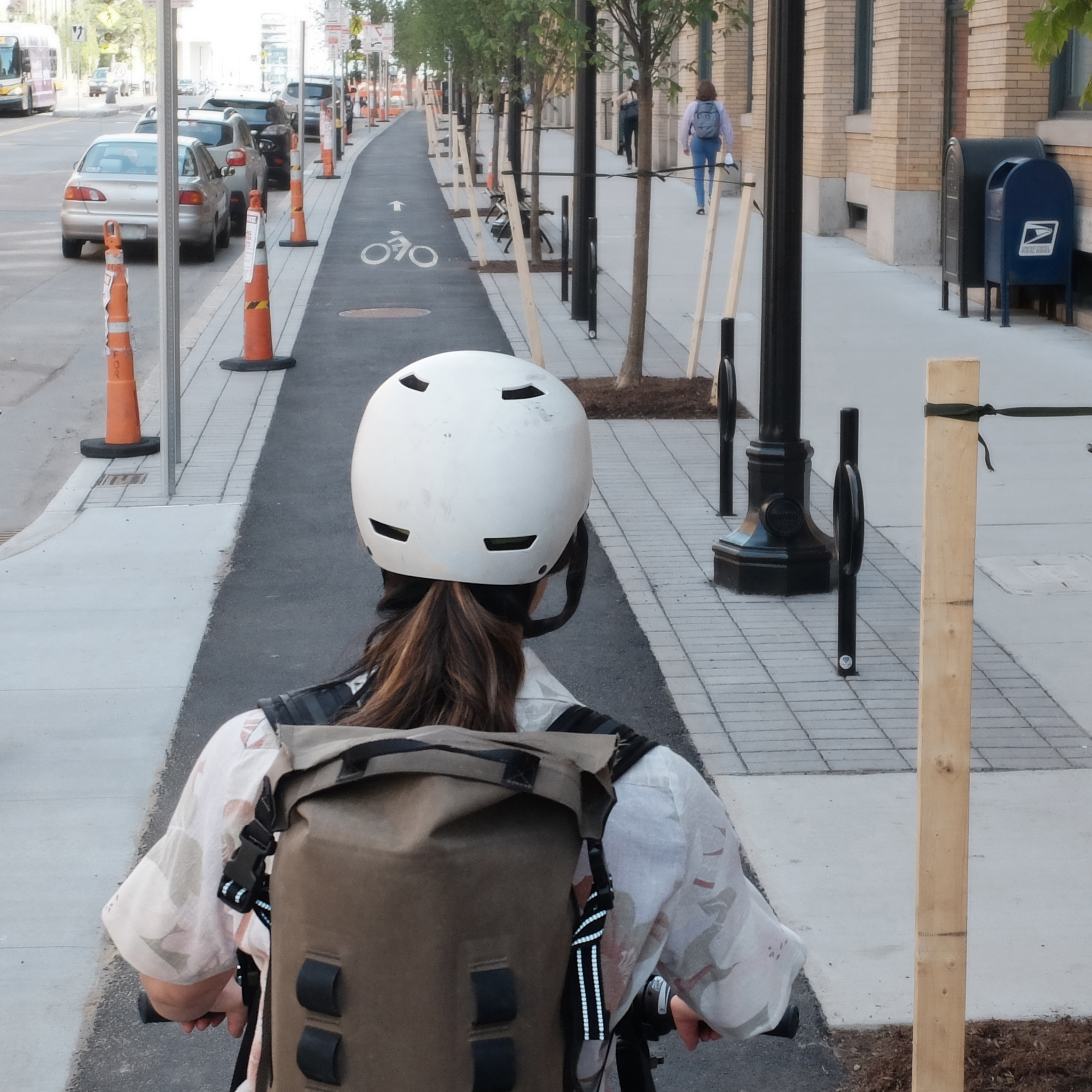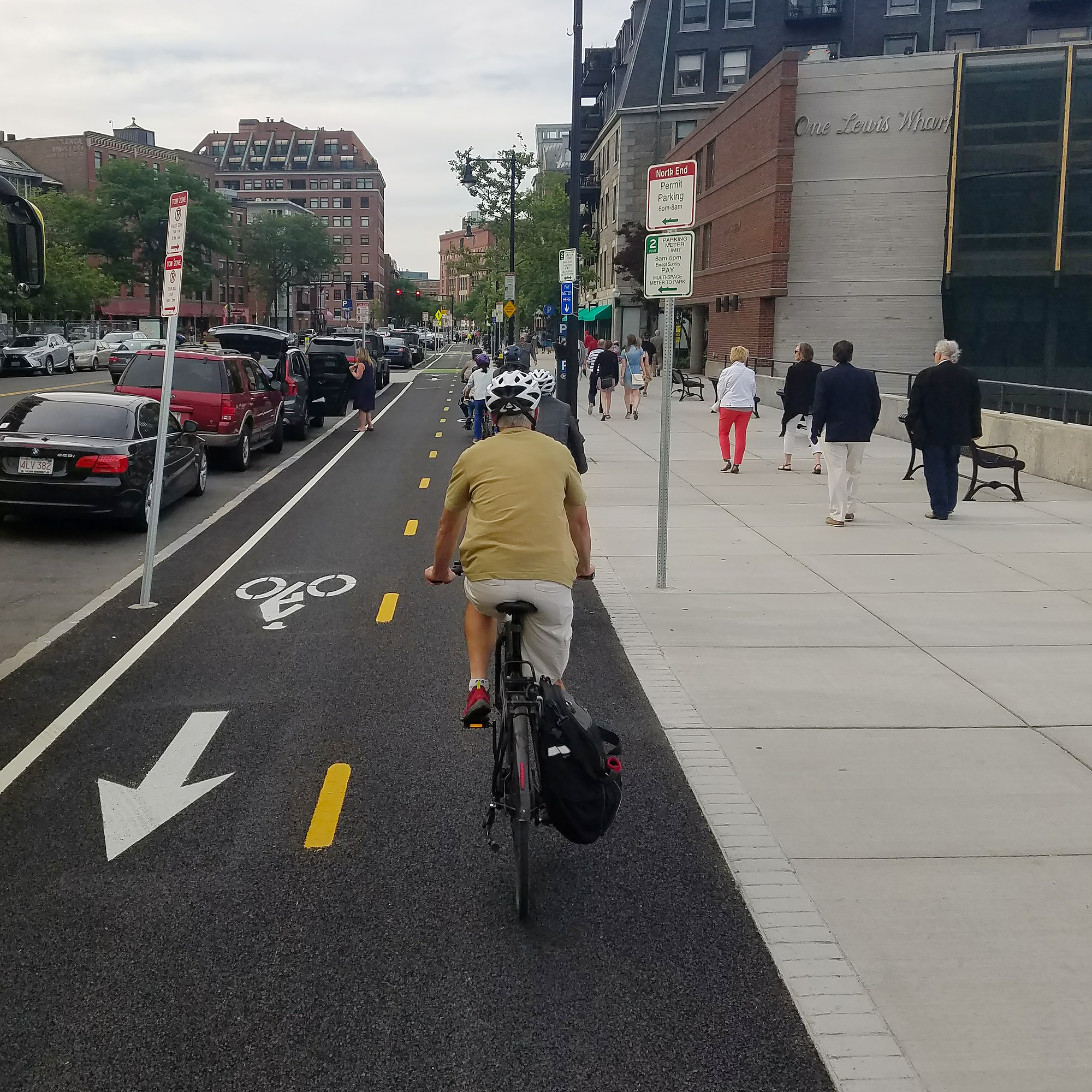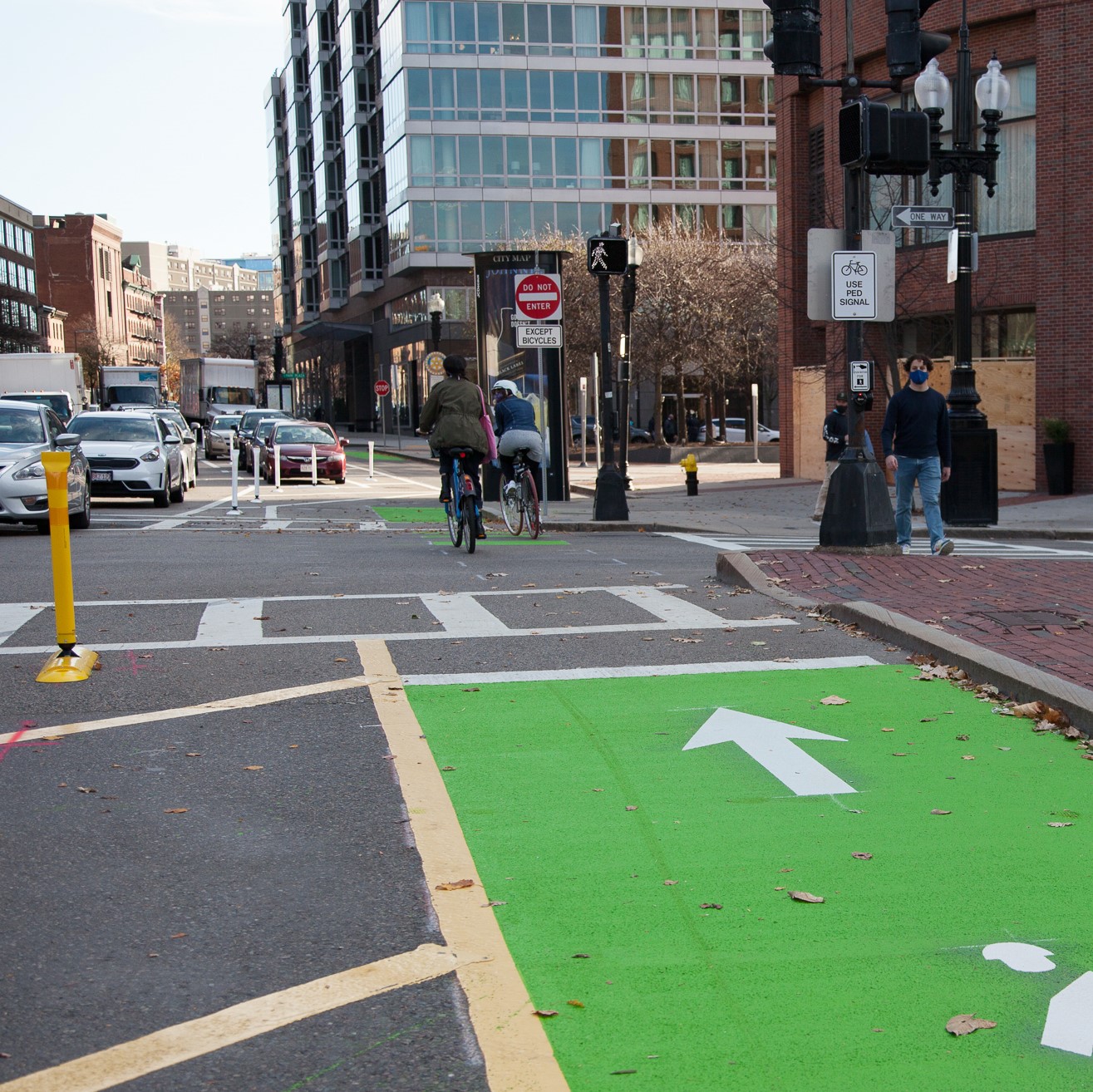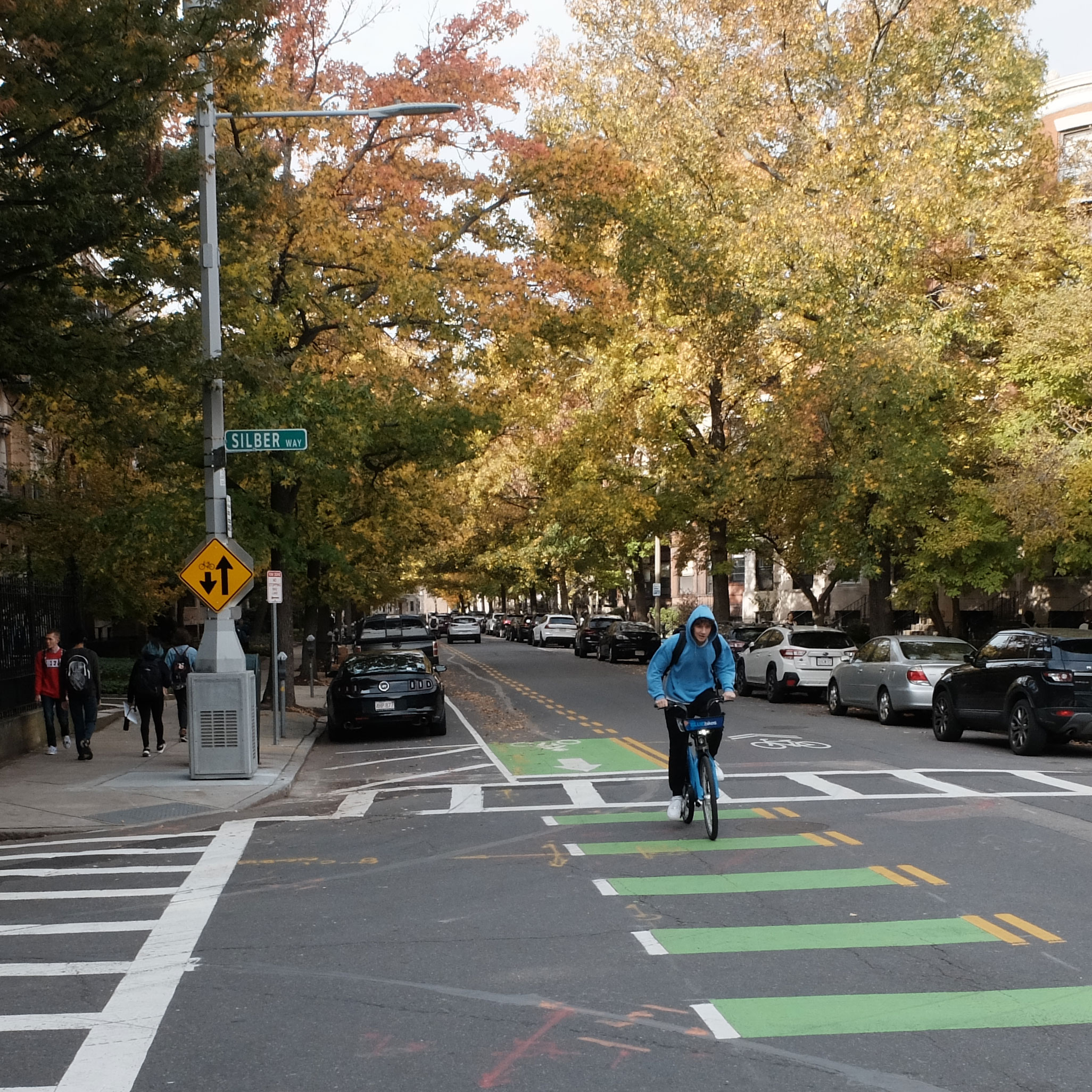Better Bike Lanes: Bike Lane Types
You can learn about the different bike lane types in the City of Boston below. These bike lane types offer more comfort for people biking. We are working to build new high comfort bike facilities and upgrade existing bike facilities to be more comfortable. For more information on our bike lane efforts, please visit our Better Bike Lanes website.
Traffic-calmed local streets
Traffic-calmed local streets are designed for slower speeds. They also discourage unnecessary through-traffic by drivers.
People feel more comfortable walking and bicycling on streets with less traffic. We can create useful routes by connecting traffic-calmed local streets. They can offer important, low-stress routes for people to:
- travel within their own neighborhoods
- get to train stations or bus stops, or
- to connect with the citywide bike network.
Separated bike lanes
Separated bike lanes provide more space and vertical separation between people on bikes and people in cars. There are several ways to provide this physical separation.
When we’re not reconstructing the street, we typically use flex posts. The posts indicate a separated bike lane. During the winter, we remove the posts so they don’t get damaged by winter maintenance activity.
On streets with parking, we place the separated bike lane between parked cars and the curb. We call this a parking-separated bike lane. People on bikes should yield to those who are crossing the bike lane between the sidewalk and their vehicle. Unless otherwise signed, all parking rules remain in effect on these streets.
When we are reconstructing a street, we can build sidewalk-level separated bike lanes. These bike lanes are at the same height as the sidewalk. People should not walk along these lanes. But, they may cross them to access bus stops and parked cars or to cross the street. People riding bikes must yield to people walking across the bike lane. We can also build separated bike lanes with permanent curbs when reconstructing a street.
In some places, we build two-way separated bike lanes. You can tell it is two-way by the dashed yellow line in the middle. We consider two-way separated bike lanes in limited circumstances, such when there are no nearby alternative routes or when one side of the street has far fewer intersections or driveways.
It takes more work to make sure that intersections are safe for people biking in two-way separated bike lanes.
Remember, most separated bike lanes in Boston are one-way only. When in doubt, look for the bike lane arrows on the pavement. They will point you in the right direction.
Contraflow bike lanes
Contraflow bike lanes are a type of bike lane that allow people biking to go both ways on a street that is one-way for motor vehicles.
Direct Routes, Better Access
One-way streets help manage the traffic flow. But, we might want to allow people to bike in both directions on a one-way street if one or both conditions are met:
- Using the one-way street in the contraflow direction helps bicyclists avoid an obstacle, like a major hill or busy street without a separated bike lane.
- There is a major destination, park, or trail access point most easily accessed via the one-way street.
On streets with higher traffic volume and higher speeds, we can add contraflow bike lanes that are separated from vehicle traffic, just like separated bike lanes. This reduces conflicts and helps more people feel safe riding bikes. We design intersections to ensure drivers and bike riders can see each other.
On streets with lower traffic volume and lower speeds, we can add contraflow bike lanes with paint and signage. The lane is positioned so that bicyclists ride on the right side of the street in the direction they are traveling, just like on most two-way streets. If there is parking, the lane is painted along the passenger side of parked cars.
A reminder

Bike lanes can be built in many different ways and go by many names. But, at the end of the day, they’re still lanes for bikes and no one should drive* in them.
When driving, you should always check your mirrors. Remember to look back before changing lanes, turning, or opening your car door. When biking, avoid riding in vehicle blind spots and be sure to use lights at night. Whether driving or biking, always yield to people walking and be considerate of other road users.
*We make an exception for emergency responders and people who keep our bike lanes clean and clear of snow.

